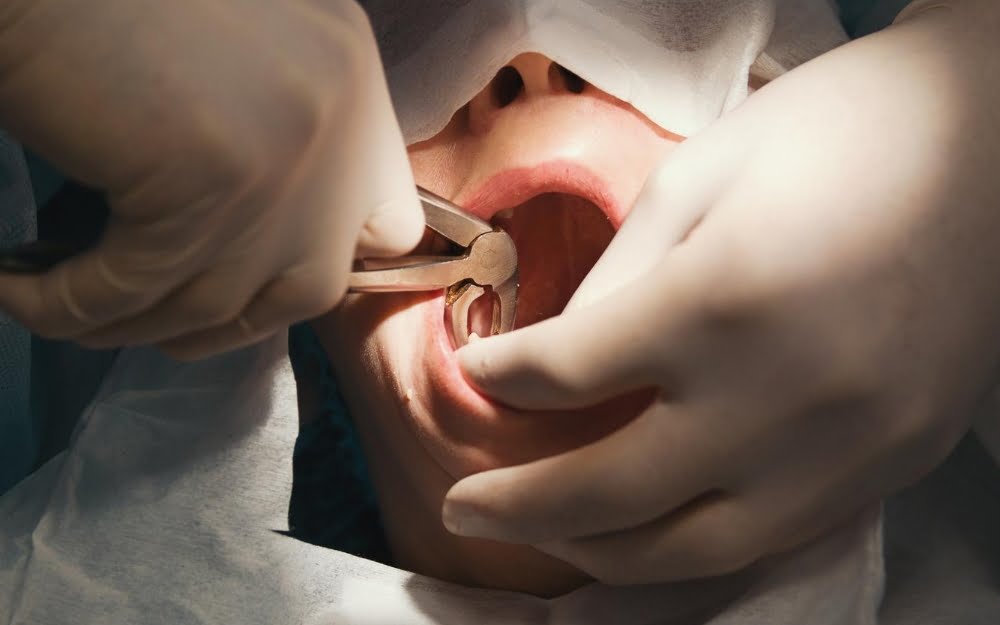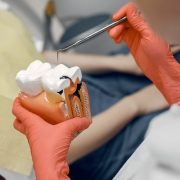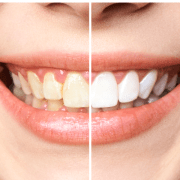What is Dental Extraction – Procedure and is it necessary?
Introduction
A tooth extraction, often colloquially referred to as “pulling a tooth”, is a dental procedure that involves removing a tooth from its socket in the jawbone. This common dental procedure is performed by dentists or oral surgeons and is performed for a variety of reasons, from tooth decay and gum disease to impacted wisdom teeth and orthodontic treatment. While tooth extractions may evoke images of discomfort and anxiety for many, understanding the procedure, its purpose and when it is necessary is essential to maintaining oral health and well-being.
Tooth Extraction Procedure
Tooth extraction is a well-established and routine dental procedure designed to relieve pain, prevent infection, and maintain or improve overall oral health. To demystify the process, let’s dive into the various aspects of tooth extraction:
- Preparation: Before tooth extraction, your dentist or oral surgeon will perform a comprehensive examination of the affected tooth or teeth. This may include x-rays to assess the position, shape and condition of the tooth, as well as any complications.
- Anesthesia: To ensure your comfort during the procedure, local anesthesia is applied to numb the area around the tooth to be extracted. In some cases, especially for complex or multiple extractions, general anesthesia or sedation may be considered to induce sleep-like relaxation.
- Extraction: The tooth is carefully loosened and extracted from its bed in the jawbone using specialized dental instruments. A dentist or oral surgeon will use controlled force to separate the tooth from the surrounding tissues. In some cases, the tooth may need to be split into smaller pieces for easier removal.
- After Extraction: Once the tooth has been successfully removed, the dentist will take steps to ensure the bleeding is controlled. This may involve placing gauze over the extraction site followed by gentle biting to encourage clot formation. Some extractions may also require stitches (stitches).
- Recovery: After the extraction, you will receive post-operative care instructions. This includes instructions for pain management, oral hygiene, dietary restrictions, and any prescribed medications, such as antibiotics to prevent infection.
- Follow-up: It is essential that you attend all scheduled follow-up appointments with your dentist or oral surgeon to monitor the healing process and address any concerns or complications that may arise.
When is tooth extraction necessary?
The decision to undergo tooth extraction is not taken lightly. Dentists prefer to preserve natural teeth whenever possible. Tooth extractions are usually considered when other treatments are unlikely to be successful or when keeping the tooth could lead to further complications. Here are some common scenarios in which tooth extraction is necessary:
- Dental Decay: Extensive dental decay can compromise the structural integrity of the tooth. If the damage is beyond repair, extraction may be the only viable option to prevent further oral health problems.
- Gum Disease: Advanced stages of gum disease can lead to weakening of the supporting structures of the tooth, resulting in tooth mobility and pain. Extraction may be necessary to prevent the spread of infection and to maintain overall oral health.
- Impacted wisdom teeth: Wisdom teeth, also known as third molars, often lack enough space to erupt properly. This can lead to impaction, causing pain, infection and damage to neighbouring teeth. In such cases, extraction is recommended.
- Orthodontic Treatment: Orthodontists may recommend tooth extraction as part of the treatment plan to create space for other teeth to align properly. This is especially common in cases of severe overcrowding.
- Infection: Teeth that are severely infected and cannot be effectively treated with root canal therapy or antibiotics may need to be extracted to prevent the infection from spreading to neighbouring teeth or other parts of the body.
- Broken or Fractured Teeth: Teeth that are severely broken or broken, with little chance of successful restoration, may need to be extracted to prevent pain and other complications.
- Failed Dental Procedures: In some cases, a previous dental procedure such as a failed root canal may require extraction if the tooth cannot be saved with repeated treatment.
- Precautionary Measures: In certain situations, teeth may be extracted as a precautionary measure. For example, individuals with compromised immune systems may undergo tooth extractions to reduce the risk of infection.

Importance of tooth extractions for oral health
Dental extractions play a vital role in maintaining and improving oral health. It serves as a means of alleviating pain, preventing the spread of infection, and alleviating complications that may arise from damaged or threatened teeth. By understanding the need for dental extractions, individuals can make informed decisions about their oral health and work with their dental professionals to achieve the best possible results.
Preserving oral health and preventing complications
When a tooth is severely damaged, decayed or infected, it can have far-reaching consequences if left untreated. Dental extractions are a proactive approach to maintaining oral health and preventing potential complications. Here are some of the benefits of early tooth extraction:
- Pain Relief: Tooth extraction provide immediate relief from the pain and discomfort associated with damaged or infected teeth. This pain relief increases the individual’s overall quality of life.
- Infection Control: Removing a heavily infected tooth helps prevent the infection from spreading to other teeth and adjacent tissues. This is vital for protecting the health of the entire oral cavity.
- Gum Disease Prevention: Dental extractions can prevent the progression of gum disease by removing teeth that have become a source of chronic infection or inflammation.
- Success in Orthodontics: In cases of orthodontic treatment, tooth extraction may be necessary to create the space needed for proper tooth alignment. This contributes to the success and long-term stability of orthodontic results.
- Reduce the risk of complications: Damaged teeth that are not extracted can lead to a number of complications, including abscesses, cysts, and even systemic health problems. Dental extractions reduce the risk of these complications.
- Improved Aesthetics: In some cases, extracting damaged or misaligned teeth can improve the overall appearance of the smile, increasing an individual’s confidence and well-being.
Conclusion: The Role of Dental Extraction in Oral Health
Dental extraction is a vital dental procedure that serves a multitude of purposes in preserving and enhancing oral health. While it may evoke feelings of apprehension, understanding the procedure and its necessity is paramount for informed decision-making. Dentists and oral surgeons carefully assess each case, considering factors such as the severity of the condition, potential risks, and alternatives to extraction before recommending the procedure.
Individuals are encouraged to maintain regular dental check-ups to detect and address dental issues early, reducing the likelihood of extensive damage that may necessitate extraction. Additionally, open communication with dental professionals is crucial, allowing for collaborative decision-making and the pursuit of the most appropriate treatment options to ensure a healthy and vibrant smile. Dental extractions, when performed judiciously and with care, contribute significantly to oral health and overall well-being.











Leave a Reply
Want to join the discussion?Feel free to contribute!